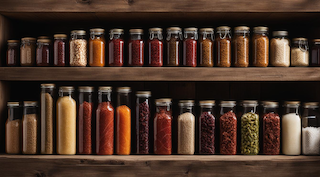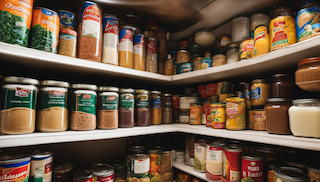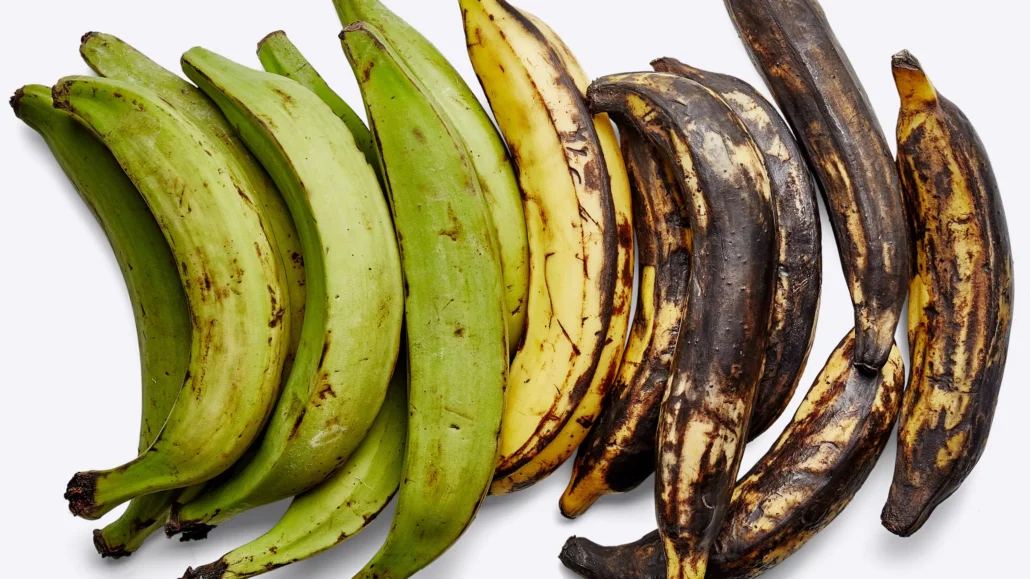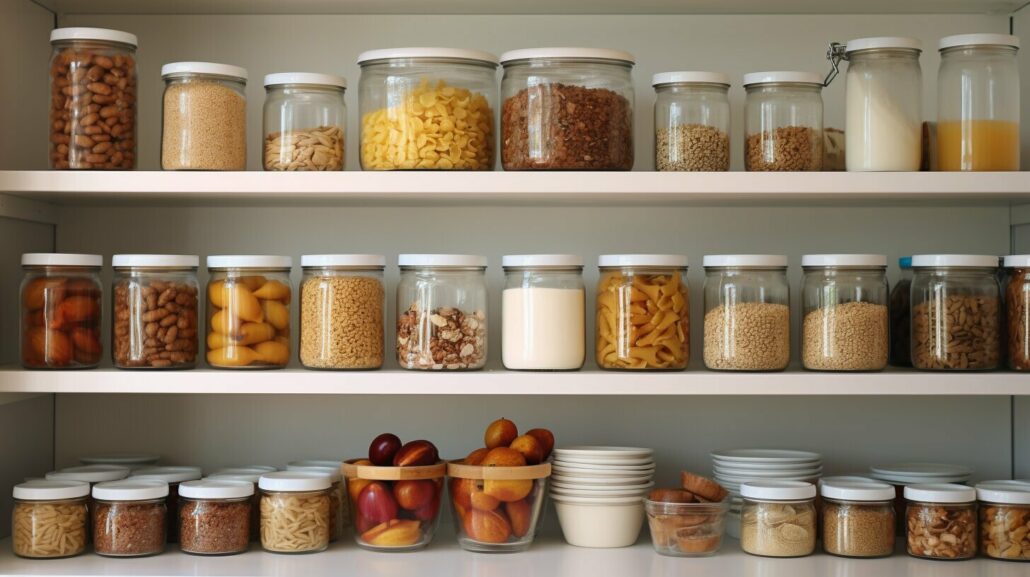Imagine a situation where emergencies render grocery stores devoid of supplies, making regular sustenance nearly impossible. When preparing for such times, it’s essential to focus on acquiring food that lasts years for SHTF. This survival guide will delve into the most efficient methods for accumulating and preserving emergency sustenance, thus ensuring you have a well-stocked pantry of long-term food supplies.
A crucial part of this process is learning to effectively navigate the supermarket for items that not only have an extended shelf life but also provide nutritional value. Let’s look into what qualifies as durable food and how you can optimize your preparedness for unforeseen challenges.
Key Takeaways
- Seek food that lasts years for SHTF during regular shopping trips for long-term survival.
- First In First Out method proves effective for managing emergency food supplies.
- Emphasize on foods with long shelf life, easy storage, and extensive durability.
- Pay attention to the USDA’s definition of ‘shelf-stable’ foods to target ideal candidates for a survival stockpile.
- Combine nutritional value with durability to achieve the perfect balance.
Understanding the Importance of Long-Term Food Storage for Emergencies
Long-term food storage is essential to withstand emergencies where regular food supplies may be cut off. By ensuring a stockpile of foods with a lasting shelf life, one’s survival is less threatened by supply chain interruptions. The capacity to store and sustain food for long durations without spoilage is key to managing these critical situations. This can be achieved by leveraging the longer-than-expected shelf lives of many pantry staples and commercially canned goods.
Investing in emergency preparedness is a proactive measure that can make a significant difference in times of crisis. By accumulating a variety of non-perishable food for emergencies, it is possible to create a durable survival food stockpile that will provide nourishment and sustenance during unexpected disasters or large-scale catastrophes. It’s essential to consider the inception of several factors that contribute to successful long-term food storage:
- Shelf life
- Packaging and storage
- Nutrition and caloric value
- Adaptability and versatility of use
Proper storage is essential for preserving the quality, safety, and nutritional value of emergency food supplies. Both commercially packaged products and home-preserved foodstuffs can benefit from careful attention to storage conditions.
Remember, food stored for long-term emergencies should be resilient in the face of uncertainty and adversity. This includes being able to withstand varying temperatures, humidity levels, and insect or rodent intrusions.
Learning about the different types of packaging and preservation methods is an essential aspect of emergency preparedness. By developing the necessary knowledge and skills to maintain food supplies, it is possible to create a long-lasting and dependable source of sustenance during challenging times.
Successful long-term food storage also requires consideration for dietary preferences, allergies, and restrictions to ensure that stored foods are safe and suitable for consumption by all members of the household. The following table outlines essential components for a comprehensive emergency food storage plan:
| Food Category | Examples | Shelf Life | Storage Tips |
|---|---|---|---|
| Grains | Rice, pasta, oats, flour | Up to 30 years (in ideal conditions) | Store in a cool, dry place; use airtight and pest-resistant containers |
| Legumes | Beans, lentils, peas | Up to 10 years (in ideal conditions) | Store in a cool, dry place; use airtight and pest-resistant containers |
| Canned Goods | Fruits, vegetables, meats, fish, soups | 1 – 5 years (varies by product) | Rotate stock as needed; discard any bulging or damaged cans |
| Dehydrated Foods | Fruit and vegetable chips, jerky, powdered milk | 1 – 5 years (varies by product) | Store in a cool, dry place; use air-tight containers |
In conclusion, a well-rounded emergency food storage plan is built on a foundation of versatile, long-lasting, and nutritious ingredients. By taking time to understand the importance of long-term food storage for emergencies, it is more likely that a household will be adequately prepared to face any challenges that may arise.
Identifying Shelf-Stable Foods: What Qualifies and Why It Matters
Shelf-stable foods are those which can be safely stored at room temperature without the risk of spoilage. These products are essential components of a well-rounded emergency food supply, ensuring that individuals have access to sustenance during times when fresh, perishable items may be unavailable. In this section, we will delve into the characteristics of shelf-stable foods and why they matter for long-term survival.
Key examples of shelf-stable foods include dried pasta, rice, bottled foods, and food products processed in aseptic packages. The ability for these items to resist spoilage is mainly attributed to their low moisture content and resistance to harmful microorganisms. Nevertheless, proper storage is crucial to achieving optimal shelf life, with that in mind, we must consider the following factors:
- Heat
- Light
- Moisture
- Pests
- Oxygen
By mitigating exposure to these elements, we can extend the shelf life of our emergency food supplies, ensuring that we remain well-nourished and prepared for any crisis that may arise.
“Shelf-stable foods are integral to long-term survival and food security during emergencies.”
Commercial canned goods and certain pantry foods form the backbone of a comprehensive emergency food supply. To help readers identify suitable items, we’ve compiled a table that lists common types of shelf-stable food products:
| Food Category | Examples |
|---|---|
| Grains & Pasta | Rice, pasta, quinoa, oats, barley |
| Legumes & Beans | Lentils, chickpeas, black beans, kidney beans |
| Canned goods | Canned fruits, vegetables, meats, fish, soups |
| Dehydrated & Dried Foods | Dried fruit, jerky, powdered milk, instant potatoes |
| Snacks & Convenience Foods | Granola bars, crackers, peanut butter, nuts, seeds |
| Bottled & Preserved Foods | Jams, jellies, honey, pickles, vinegar |
In summary, identifying and incorporating shelf-stable food products into your long-term food storage plans is necessary to ensure food safety and security during emergencies. By understanding the importance of these non-perishable items and learning how to properly store them, you can successfully build a stockpile of nutrient-rich foods that will last you for years to come.
What to Look for When Shopping for Long-Lasting Emergency Food
When it comes to shopping for long-lasting emergency food, there are several factors to consider. In this section, we’ll briefly cover three important aspects to keep in mind: long shelf life, packaging and storage convenience, and nutritional value.
Long Shelf Life: Seeking Durability in Food Items
One of the most significant factors to consider when shopping for food that lasts years for SHTF is long shelf life. Ideally, you want to target foods with a shelf life that extends at least one year or more, while also being mindful of products close to their expiration dates upon purchase. Foods such as rice and dry beans embody both durability and longevity, with some resources even suggesting superb shelf life when stored properly. In addition, be sure to check the “best by” dates on canned goods and other packaged items to ensure optimal freshness.
Packaging and Storage Convenience: The Best Options for Preppers
Next, focus on the packaging and storage convenience. When shopping for emergency food supplies, look for items with durable packaging, like cans or boxes, over easily perishable types. Stick to the interior aisles of grocery stores, as this is where most shelf-stable items are typically found. Space efficiency is also crucial when selecting items for your prepper’s pantry. Consider the size of the packaging and how easy it is to organize and store within your designated space.
Nutritional Value: Balancing Health with Longevity
Lastly, balance is essential between nutrition and shelf life when buying preserved food options. Incorporate foods that contribute to a balanced and wholesome diet, and avoid over-reliance on items with minimal nutritional gains. The ideal emergency food stock should include items that require minimal preparation, pair well with other ingredients, and provide substantial nutritional value. Below is a table listing some common preserved food items and their respective nutritional benefits:
| Preserved Food | Nutritional Benefits |
|---|---|
| Canned Vegetables | Vitamins, minerals, and fiber |
| Dried Fruits | Vitamins, minerals, and antioxidants |
| Dried Pasta | Carbohydrates and protein |
| Jarred Nut Butters | Protein, healthy fats, and vitamins |
| Freeze-Dried Meats | Protein, vitamins, and minerals |
By keeping these factors in mind, you will be better equipped to shop for long-lasting emergency food that will endure various situations and meet your nutritional needs in times of crisis.
The Role of Carbohydrates, Proteins, and Fats in Survival Food
An ideal emergency stockpile encompasses a mix of carbohydrates, proteins, and fats. While carbohydrates are largely stable over time, proteins and fats can spoil. Therefore, careful selection of pantry staples can ensure that caloric and nutritional needs are met even in long-term survival scenarios. This section discusses the significance of carbohydrates, proteins, and fats in a survival food diet and highlights specific food items to consider.
- Carbohydrates in emergency food
- Proteins in SHTF diet
- Fats in survival food
Carbohydrates in Emergency Food
Carbohydrates provide vital energy for the body in emergency situations. As the body’s primary fuel source, it’s crucial to have an adequate supply of carbohydrates in your survival food stockpile. Examples of carbohydrate-rich foods include grains (like rice, pasta, and cereals), legumes, and certain canned goods like corn and peas. These items are known for their long shelf-life when stored properly, making them excellent options for a prepper’s pantry.
Proteins in SHTF Diet
Proteins are necessary for muscle building, repair, and overall body maintenance. While many proteins, like meats and dairy products, have limited shelf-life, there are still several options for extended survival food supplies. Foods like canned meats, beans, and lentils are good sources of protein, providing significant nutritional value in emergency scenarios. Additionally, incorporating items like powdered eggs, freeze-dried meats, and textured vegetable proteins can further boost protein content.
Fats in Survival Food
Fats are essential for maintaining cell structure, absorbing vitamins, and providing a concentrated source of energy. While fats are more susceptible to spoilage compared to carbohydrates and proteins, there are long-lasting options available to ensure a well-rounded diet. Including foods like nuts, seeds, canned fish, and peanut butter in your emergency food stockpile can help to meet daily fat requirements and provide essential nutrients.
| Food Type | Carbohydrate Source | Protein Source | Fat Source |
|---|---|---|---|
| Grains | Rice, pasta, cereal | – | – |
| Legumes | Beans, lentils, peas | Beans, lentils | – |
| Canned Goods | Corn, peas, potatoes | Canned meats, fish | Canned fish, coconut milk |
| Other Items | – | Powdered eggs, freeze-dried meats, textured vegetable proteins | Nuts, seeds, peanut butter |
In conclusion, a well-prepared emergency food supply should include a variety of carbohydrates, proteins, and fats to sufficiently meet the body’s daily nutritional needs. Continuously assess and adjust your stockpile to maintain a balance of these essential nutrients, ensuring optimal preparedness for any long-term survival scenario.
Maximizing Pantry Space: Selecting Calorically Dense Survival Foods
In situations where space is limited, it becomes crucial to maximize pantry space by focusing on calorically dense survival foods. These high-energy items provide substantial nourishment within a confined storage area, striking the right balance between sheer calorie count and nutrient content. By prioritizing foods with a high caloric content relative to their volume, you can create a robust and efficient emergency stockpile.
How to Choose High-Energy Foods for Your Emergency Stockpile
Selecting high-energy foods for your emergency stockpile involves considering several factors. The following tips can help you make informed decisions when curating a space-saving food storage plan:
- Favor staples with high caloric density: Opt for items like grains, beans, and legumes, which are calorically dense and occupy minimal storage space.
- Include nutrient-rich processed foods: Items such as granola bars, nut butter, and energy bars can provide both energy and essential nutrients without taking up much room.
- Consider dehydration and freeze-drying: Dehydrated or freeze-dried fruits, vegetables, and meats offer a lightweight and compact alternative to fresh produce, while preserving nutritional content.
- Don’t forget about liquids: Liquids like honey, oil, and syrup can be vital calorie sources, so ensure their inclusion in your emergency stockpile as they can be stored in compact containers.
To better illustrate the caloric content of key survival foods, the table below lists common options in terms of calories per 100 grams.
| Food Item | Calories per 100g |
|---|---|
| Rice | 365 |
| Beans | 347 |
| Lentils | 353 |
| Almonds | 579 |
| Granola Bars | 460 |
| Peanut Butter | 588 |
| Dehydrated Fruit | 300-358 |
| Freeze-Dried Vegetables | 200-250 |
As you can see, these calorically dense survival foods offer substantial sustenance in compact and manageable packages. Consequently, your emergency stockpile will occupy less space while still providing the critical nourishment necessary for survival.
Pantry Staples: Grains, Beans, and Legumes Essential for Survival
In a world with increasing uncertainty, having a pantry stocked with essential survival foods is crucial when planning for emergencies. Among the many pantry staples for survival, grains, beans, and legumes serve as a cornerstone for building a long-lasting and diverse emergency food supply. These staples provide a solid source of essential nutrients, paired with impressive longevity suitable for stockpiling.
“Grains, beans, and legumes not only offer lasting shelf life but also pair together for complete proteins, making them critical for crisis preparedness.”
- Whole Grains: Brown Rice, Quinoa, and Whole Wheat Pasta
- Beans: Pinto, Black, and Kidney Beans
- Legumes: Lentils, Chickpeas, and Split Peas
Combine these pantry staples in various dishes to meet your daily nutritional needs even when the going gets tough, ensuring a nourished and fortified diet during times of crisis.
Grains in Emergency Food
Grains are well-recognized for their long shelf life and space-efficient storage as emergency food. Long-grain white Rice, for example, boasts an impressive shelf life of about 25-30 years, while whole grains like brown rice, quinoa, and whole wheat pasta offer a similar range of longevity and significant essential nutrients despite a slightly shorter shelf life of up to 5 years.
Beans and Legumes for SHTF
Beans and legumes provide much-needed proteins and fiber during emergency situations, adding substantial value to your pantry. These plant-based essential survival foods come in various forms, including dried and canned, with an array of options that cater to personal preferences and dietary requirements.
| Bean or Legume | Shelf Life (Dried) | Shelf Life (Canned) |
|---|---|---|
| Pinto Beans | Up to 10 years | 2-5 years |
| Black Beans | Up to 10 years | 2-5 years |
| Kidney Beans | Up to 10 years | 2-5 years |
| Lentils | Up to 5 years | 2-5 years |
| Chickpeas | Up to 5 years | 2-5 years |
| Split Peas | Up to 5 years | 2-5 years |
Strive to keep a well-rounded stockpile of grains, beans, and legumes in your pantry, as they will prove invaluable during crisis situations, ensuring that you never go hungry or struggle to meet your essential nutritional needs when it matters most.
Prolonging the Shelf Life of Your Survival Food Supplies
Proper food storage techniques play a vital role in prolonging the shelf life and extending food longevity for your survival food supplies. Understanding and implementing these methods can significantly boost your emergency preparedness and sustain the nutritional value of your pantry staples. In this section, we will discuss effective strategies for survival food preservation and management.
Effective Strategies for Extending Food Longevity
Reducing exposure to factors such as heat, light, moisture, pests, and oxygen can greatly increase the shelf life of your survival food. Below are some key practices for enhancing your food storage techniques:
- Proper storage containers: Utilize mylar bags or sealed buckets to store dried goods, protecting them from moisture and pests.
- Use of oxygen absorbers: Including oxygen absorbers in your storage containers helps to extend the life of your food by limiting oxidative damage.
- Temperature control: Store your food in a cool and dry environment, as high temperatures can accelerate the deterioration process.
- Keep it organized: Label your items with their expiration dates, and practice the First In First Out (FIFO) method to avoid potential waste.
- Regular inspection: Routinely check your supplies for signs of spoilage or infestation, and address issues promptly to preserve the overall quality of your stockpile.
By implementing these practices, you can effectively prolong the shelf life of your survival food supplies, ensuring that you and your family have a reliable source of nutrition during times of crisis. It is crucial to maintain a well-organized and sustainable food stockpile, always prioritizing the safety and nutritional value of your stored items in the long run.
The Value of Fats in Your SHTF Diet Plan
During crisis situations, ensuring a well-rounded dietary intake is crucial for maintaining health and energy levels. Inclusion of fats in your SHTF diet plan ensures not only increased satiety but also acts as a dense source of calories and nutrients. With their shelf stability and rich caloric profile, oils and butters should feature prominently in any emergency food supply.
When it comes to incorporating nutritional fats for survival, mindful selection of sources is key for maximizing both shelf life and health benefits. Some fats to consider including in your emergency food storage are:
- Coconut oil
- Olive oil
- Ghee (clarified butter)
- Peanut butter
- Canned fish (such as salmon or tuna)
- Beef tallow or lard (for cooking)
It is important to note that not all fats are created equal. When selecting items to include in your emergency food stash, prioritize options that offer healthier fats, such as unsaturated fats found in olive oil and the medium-chain triglycerides (MCTs) in coconut oil. These options provide additional health benefits and are less likely to contribute to inflammation or heart disease compared to unhealthy, processed fats that might be found in heavily hydrogenated products.
Remember, incorporating a variety of fats in your emergency food supply ensures a balanced diet, benefiting both body and mind amidst an unpredictable situation.
Of the many health benefits of fats in food storage, one of the most critical is their ability to provide energy during high-stress times when calorie-dense sustenance is crucial. Fats deliver approximately nine calories per gram, which is more than double the caloric value of carbohydrates or proteins. This characteristic is particularly valuable when taking into consideration the space restrictions inherent to emergency food storage.
Beyond their shelf stability and caloric density, fats play an essential role in overall health. Fats support hormone production, promote cell function, reduce inflammation, and aid in the absorption of fat-soluble vitamins A, D, E, and K. Ensuring an adequate supply of fats in your SHTF diet plan not only prepares you to face emergencies but also helps mitigate the adverse effects of high-stress situations on your body, leading to a healthier and more resilient version of yourself in unexpected scenarios.
Preserved Protein Sources: Meat and Plant-Based Alternatives
When planning for long-term survival, it’s essential to include preserved protein sources in your emergency food stockpile. A well-balanced diet containing both meat and plant-based proteins not only contributes to overall health but also increases your chances of thriving during emergencies. In this section, we’ll explore various preserved protein options and their suitability for long-term storage.
Canned, Dried, and Freeze-Dried Proteins for Long-Term Survival
Canned meats, such as chicken, tuna, and salmon, provide a convenient source of protein and can last for years on the shelf. On the other hand, plant-based alternatives like textured vegetable proteins (TVP) and dehydrated vegetables, while offering a lighter and more environmentally friendly option, can also supply essential nutrients during a crisis.
Some common preserved protein sources to consider include:
- Canned meats (e.g., chicken, tuna, and salmon)
- Textured vegetable proteins (TVP)
- Dehydrated vegetables (e.g., soybeans and peas)
- Freeze-dried meats and vegetables
- Jerky and other preserved meats
- Protein bars and powders
It’s crucial to note that different protein sources have varying shelf lives, which must be considered when stockpiling. Proper storage and rotation practices ensure that your preserved proteins remain safe for consumption while maximizing their utility.

Below you’ll find a comparison of some popular preserved protein sources and their average shelf lives:
| Protein Source | Average Shelf Life |
|---|---|
| Canned meats | 2-5 years |
| Textured vegetable proteins (TVP) | 10-20 years |
| Dehydrated vegetables | 10-15 years |
| Freeze-dried meats | 25-30 years |
| Jerky | 1-2 years |
| Protein bars and powders | 1-2 years |
Always remember that preserving protein sources and maintaining their shelf life requires proper storage conditions. This includes protecting the items from temperature fluctuations, moisture, and pests. By taking these precautions, not only will your proteins last longer, but they’ll also remain nutritionally intact to help you weather any emergency scenario.
Selecting Survival Foods Based on Dietary Restrictions and Preferences
Designing an emergency food stockpile involves ensuring all dietary needs are met, even under challenging conditions. It’s crucial to be attentive to survival food dietary restrictions, emergency foods for allergies, and food sensitivities in SHTF scenarios. Therefore, appropriately accommodating dietary needs in your food stockpile is essential for maintaining wellbeing and resiliency.
How to Handle Allergies and Food Sensitivities in Your Emergency Kit
When selecting long-lasting foods based on dietary restrictions and preferences, a thorough assessment of individual needs is vital. Here are some key considerations to help you build a diverse, robust, and accommodating stockpile:
- Take into account common food allergens such as peanuts, tree nuts, shellfish, soy, and gluten. Make sure to include safe substitutes that provide equivalent nutritional value.
- For individuals with food intolerances or sensitivities, like lactose intolerance or gluten sensitivity, search for alternatives such as lactose-free milk, gluten-free grains, and pasta.
- For those following plant-based or vegetarian diets, focus on a variety of preserved plant-based protein sources like beans, lentils, and textured vegetable proteins.
- For those following specific dietary requirements, such as low-sodium or low-sugar diets, choose low-sodium canned goods, spices to enhance flavors, and alternatives to sweeteners.
An example food stockpile accommodating various dietary needs might include:
| Category | Food Item | Dietary Restrictions Addressed |
|---|---|---|
| Protein | Canned beans and legumes | Vegetarian, vegan, gluten-free |
| Protein | Textured vegetable protein | Vegetarian, vegan, gluten-free |
| Grains | Gluten-free pasta and rice | Gluten-sensitive, Celiac |
| Dairy | Lactose-free milk | Lactose intolerant |
| Snacks | Nut-free protein bars | Nut allergies |
| Canned goods | Low-sodium canned vegetables | Low-sodium diet |
When planning accommodations for dietary restrictions, it’s essential to explore various food options and combinations, ensuring both nutrition and variety. After all, being prepared involves considering every family member’s unique needs and preferences.
Be Prepared: Tips for Maintaining an Organized and Sustainable Food Stockpile
Maintaining a food stockpile involves more than just collecting items; it requires regular rotation, consideration for dietary needs, and strategies for ensuring ongoing edibility and nutritional adequacy. In this section, practical advice is conveyed for establishing a methodical stockpiling approach and consistent oversight.
A sustainable food storage strategy necessitates an organized system to maximize longevity and prevent spoilage. Regularly checking expiration dates and employing the First In, First Out (FIFO) method helps maintain the freshness and safety of your stored foods. Additionally, rotating items through your regular meal planning can prevent waste and reduce risks associated with consuming expired products.
Adapting your emergency food stockpile to accommodate diverse dietary needs is crucial for long-term survival. Ensure you include options for those with allergies, food sensitivities, and other dietary restrictions, without compromising shelf life or nutrition. By being mindful of these factors, you can guarantee the wellbeing of everyone reliant on your food storage during crisis situations.
In conclusion, creating and maintaining an organized and sustainable food stockpile is essential for preparedness. By implementing regular rotation routines, considering various dietary requirements, and optimizing storage conditions, you can be confident that your emergency food supplies will sustain you and your loved ones in times of need.










